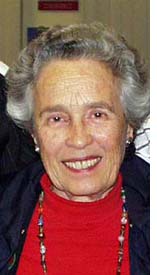By Eileen Wingard

LA JOLLA, California — The Strings of TICO, the Tifereth Israel Community Orchestra, needed to postpone its concert, originally scheduled for last November, to February, due to the Omicron variant of the coronavirus. The program finally took place in the First Methodist Church in Chula Vista on February 6 and then, in the Cohen Social Hall of the Tifereth Israel Synagogue on February 8.
The concert featured the strings, with an electronic harpsichord added for Bach’s Brandenburg Concerto #3 and a timpani added for Turina’s La Oration Del Totero. These instrumentalists, unlike the brass and woodwinds, could play while being masked.
The extra months of rehearsing allowed this concert to be performed with additional polish and precision. There were five violinists in the first violin section and six in the second, six violas, five cellos, and three string basses, and the ensemble played with strength and subtlety. With good intonation, strong overtones were generated which resulted in an amplified, focused sound that projected well.
The Brandenburg Concerto was played with forward moving energy, each section holding its own. In the Serenade #6 in D Major by Mozart, the four soloists, concertmaster Bryce Newall, principal second Jenee Wallace, principal violist Franklin Au, and principal bass Jim Lewis executed their parts with confidence.
La Oracion Del Torero (The Bullfighter’s Prayer) was a welcome 20th century addition. The seven-minute work opened with impressive mystery. Flamenco themes marked its Spanish origin with cellos and violas shining.
After intermission, the Serenade for Strings in C by Tchaikovsky occupied the entire second half of the program. Its four movements are even more taxing to play than a symphony, because, as conductor David Amos explained, in a symphony, the strings often have some rests when the winds and brass are playing, but in this work, there is almost no rest for any of the string sections.
The repertoire selected for this concert covered the five main periods of orchestral music, from the Baroque period through the Classical period, the Romantic period up through the 20th Century. Except for the work by Joaquin Turina, all the other selections were known to most classical music attendees. It was comforting to return to a concert with familiar musical friends after most of us have suffered a live music drought during these pandemic years.
Eileen Wingard, a retired violinist with the San Diego Symphony Orchestra, is a freelance writer specializing in coverage of the arts. She may be contacted via eileen.wingard@sdjewishworld.com
Sorry I could not be there